Researchers determined the Nebra Sky Disk was created using a "hot forging" process in which the metal was heated and hammered at least 10 times.
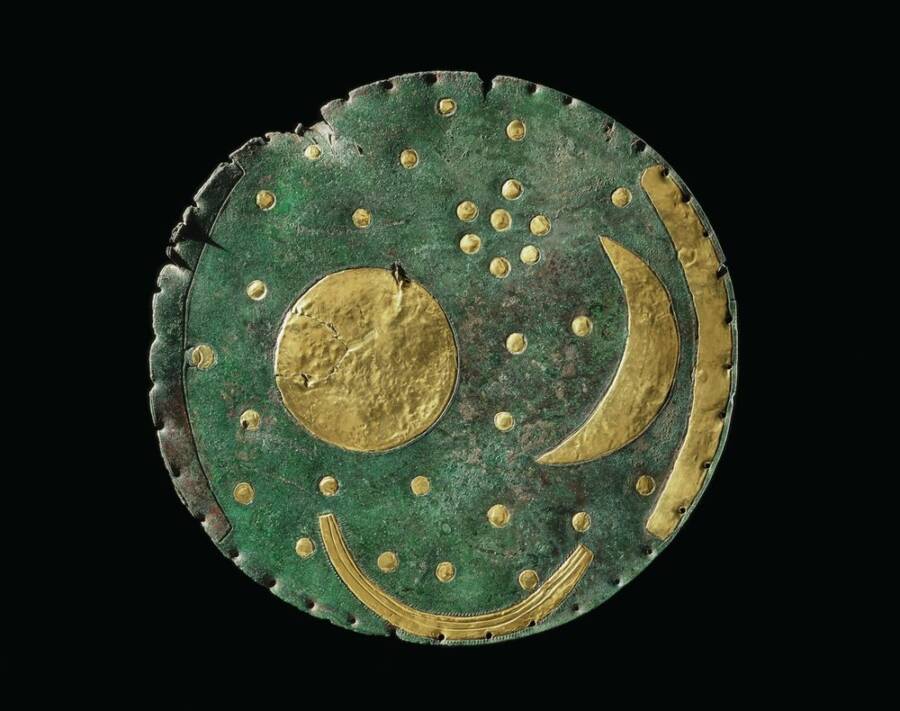
State Office for Monument Preservation and Archaeology Saxony-Anhalt, Juraj LiptákThe Nebra Sky Disk, an Early Bronze Age artifact and the oldest known depiction of the cosmos.
In 1999, treasure hunters searching a field near the German town of Nebra unearthed an ancient bronze disk decorated with a colorful image of the cosmos. When experts analyzed the artifact, they estimated it to be 3,600 years old, making it the oldest known depiction of the night sky.
In the 25 years since it was first discovered, no one has been able to determine how Bronze Age humans made the Nebra Sky Disk — until now. A new study published in Scientific Reports sought to determine once and for all how the Nebra Sky Disk was crafted. To solve this mystery, researchers constructed a replica disk using a sophisticated metal-forging technique. When they then compared it to the original disk using metallographic analysis, they discovered that their recreation was shockingly accurate.
What Is The Nebra Sky Disk?
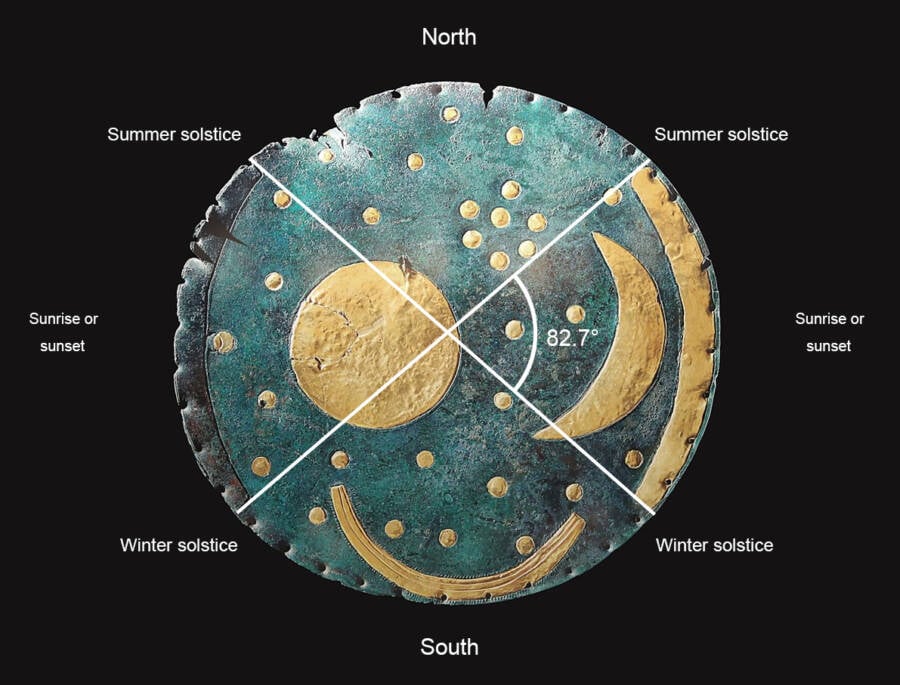
Frank Vincentz/Wikimedia CommonsAn examination of the symbols on the Nebra Sky Disk.
The Nebra Sky Disk is a remarkable artifact that has stunned historians, archaeologists, and astronomers since its discovery. It was found by metal detectorists in Germany in 1999 and is considered to be the oldest known depiction of the cosmos.
The artifact dates back to between 1800 and 1600 B.C.E., measures one foot in diameter, and is adorned with gold inlays that depict celestial objects like the Sun, Moon, and stars. Two arcs along the edges are thought to symbolize the solstices, and a final arc added later may represent a solar barge (a mythological boat the Sun traveled on during the night).
Historians believe the Nebra Sky Disk was used by Bronze Age people to track solar and lunar cycles, which would have aided with agricultural planning and ritual observances. Most remarkably, though, the disk demonstrates an advanced understanding of celestial phenomena for the time, particularly the relationship between the solstices and the Moon’s phases.
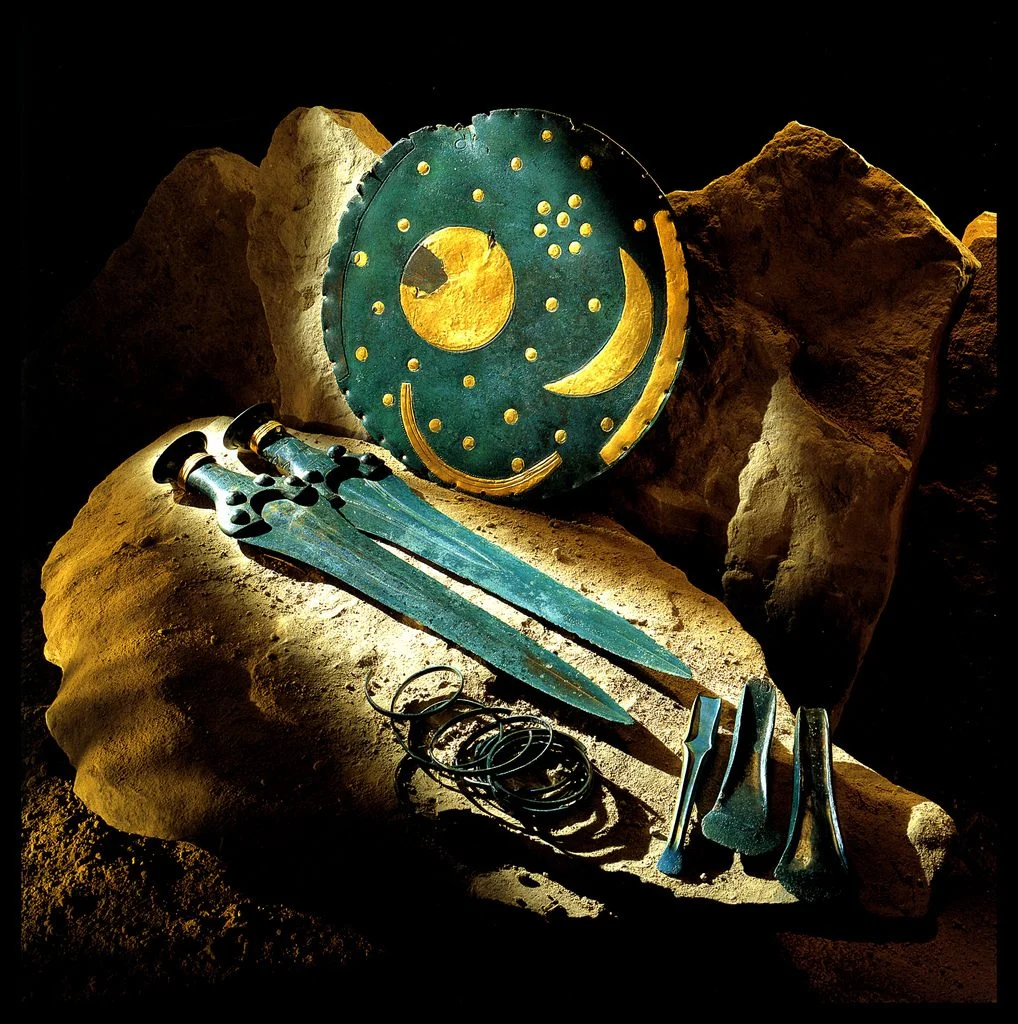
State Museum for Prehistory in Halle, GermanyThe Nebra Sky Disk with the other artifacts discovered alongside it.
It was buried alongside other high-status Bronze Age items such as swords, axes, and jewelry, suggesting it was part of an elite ritual offering or burial. Likewise, the site where it was found, the Mittelberg hill, may have been a significant ceremonial location.
However, the Nebra Sky Disk has also been the subject of many debates about its authenticity, interpretation, and purpose. Initial skepticism about whether it was a forgery has been largely dispelled, though, and it is now recognized as a genuine artifact.
Today, it is housed at the State Museum of Prehistory in Halle, Germany, where it is frequently studied. These observations have led to a further understanding of the disk’s makeup — and prompted this latest study into how it was crafted.
Researchers Discover The Secret Of How The Nebra Sky Disk Was Made
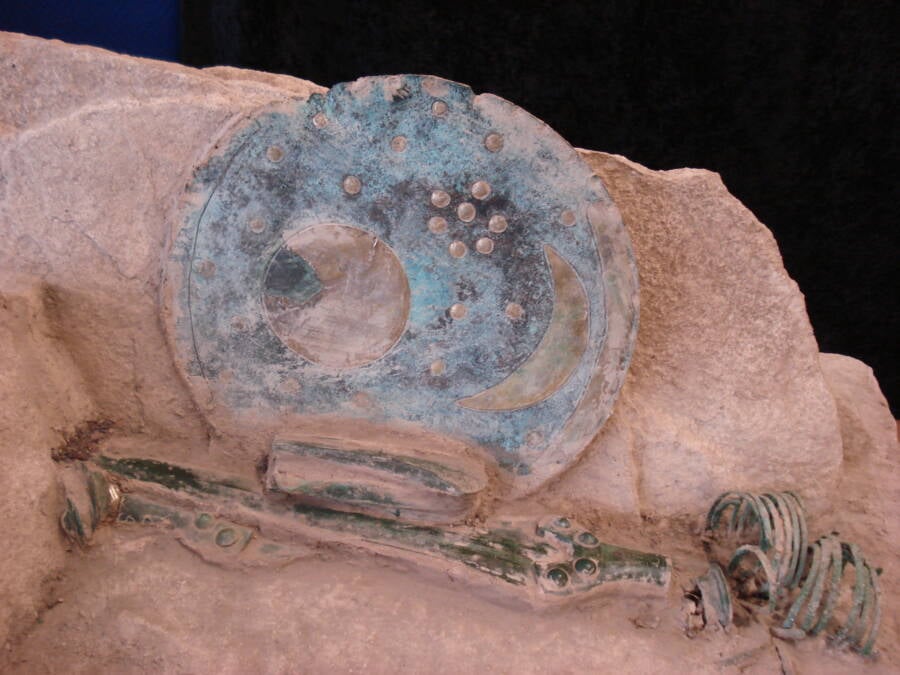
Christian Reinboth/Wikimedia CommonsA replica of the Nebra Sky Disk for a German exhibition.
The joint study was carried out by researchers from Otto-von-Guericke University in Magdeburg, Germany, experts from the Saxony-Anhalt State Museum of Prehistory, the local engineering firm DeltaSigma Analytics, and coppersmith Herbert Bauer.
Previous expert analyses of the Nebra Sky Disk determined its metallic makeup, finding that the copper used in the disk came from the Alps, while the gold inlay originated in Cornwall, England. However, forging metal into such a thin disk would have been a difficult task for Bronze Age people — and so the question remained: How did they do it?
As study co-author Christian-Heinrich Wunderlich told Live Science, most coppersmithing was carried out by hammering “cold” or unheated metal into shape. But analysis of the Nebra Sky Disk’s copper crystals shows that it was instead crafted over at least 10 cycles of a “hot forging” process in which it was heated to more than 1,200 degrees Fahrenheit between hammerings.
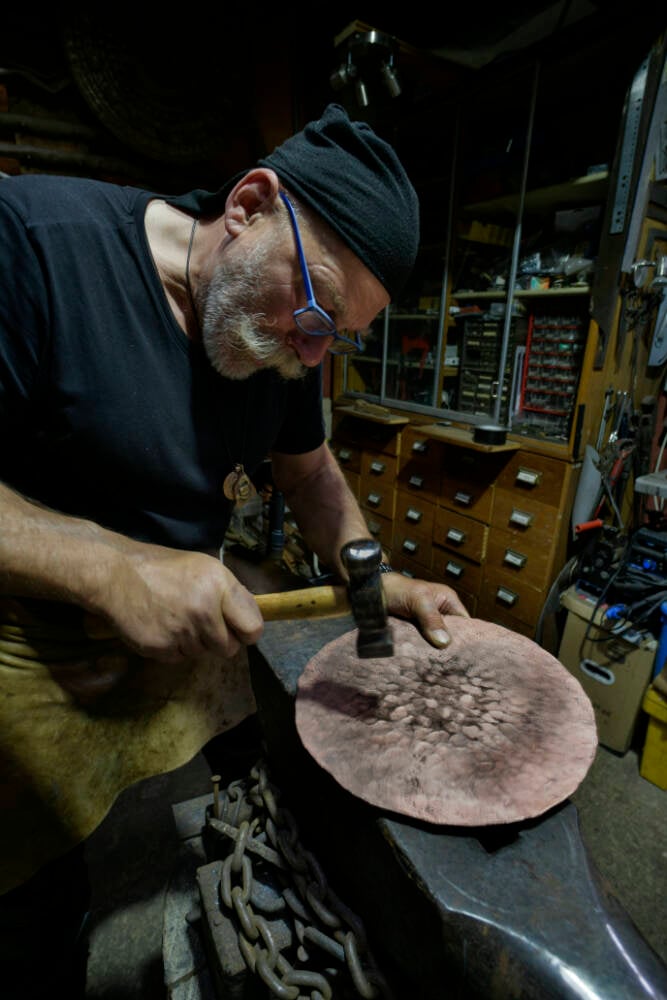
State Office for Monument Preservation and Archaeology Saxony-Anhalt, Juraj LiptákCoppersmith Herb Bauer hammering out the replica disk.
The team utilized this technique to create their replica. They heated the replica disk repeatedly during its manufacture and then compared it with the original using metallography after one cycle, then after 10 cycles, and then at the end of the smithing, which was a full 55 cycles.
“Surprisingly, the microstructure of the replica stage 2, instead of replica stage 3, is similar to the Nebra Sky Disk regarding all microstructural properties,” the study authors wrote. “This leads to the assumption that the preform was thinner with a higher diameter than we have chosen.”
Furthermore, as Wunderlich explained, this provides more evidence that the disk was not a forgery. The complexity of the forging process would have simply been too much of a hassle for someone looking to fake the discovery. Instead, it shows just how advanced metalworking had already become by the Early Bronze Age — a testament to the skills and prowess of our ancient ancestors.
“The fact that the investigations have produced such fundamental new findings more than 20 years after the Sky Disk was secured not only demonstrates the extraordinary character of this find of the century but also how highly developed the art of metalworking was in the Early Bronze Age,” said state archaeologist Harald Meller in a translated statement.
“In addition,” Meller continued, “the Sky Disk is impressive evidence of how important it is for the advancement of knowledge to subject known and supposedly researched finds to a new examination when new methods are available.”
After learning about how the Nebra Sky Disk was made, read about 44 other ancient artifacts that show what life was like for our ancestors. Then, go inside the stories behind these nine creepy artifacts.





